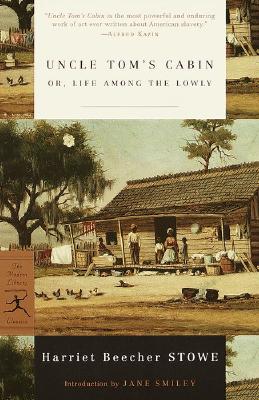Harriet Beecher Stowe, a prolific writer best remembered today for Uncle Tom's Cabin, was born in Litchfield, Connecticut, on June 14, 1811, into a prominent New England family. Her father, Lyman Beecher, was a well-known Congregational minister, and her brother Henry Ward Beecher became a distinguished preacher, orator, and lecturer. Like all the Beechers she grew up with a strong sense of wanting to improve humanity. At the age of thirteen Harriet Beecher enrolled in the Hartford Female Seminary and subsequently taught there until 1832, when the family moved to Cincinnati. In Ohio she was an instructor at a school founded by her elder sister Catharine, and she soon began publishing short stories in the Western Monthly Magazine. Four years later, in 1836, Harriet Beecher married Calvin Stowe, a respected biblical scholar and theologian by whom she had seven children. In order to supplement the family's meager income she continued writing. The Mayflower, her first collection of stories and sketches, appeared in 1843. During this period abolitionist conflicts rocked Cincinnati, and Mrs. Stowe witnessed firsthand the misery of slaves living just across the Ohio River in Kentucky. But not until the passage of the Fugitive Slave Act of 1850 was she inspired to write about their plight. After the family resettled in Brunswick, Maine, when Mr. Stowe was hired as a professor at Bowdoin College, she began working on a novel that would expose the evils of slavery. First serialized in the National Era, an abolitionist paper, in forty weekly installments between June 5, 1851, and April 1, 1852, and published as a book on March 20, 1852, Uncle Tom's Cabin was an enormous success. Tolstoy deemed it a great work of literature 'flowing from love of God and man, ' and within a year the book had sold more than 300,000 copies. When Uncle Tom's Cabin appeared in Great Britain Queen Victoria sent Mrs. Stowe a note of gratitude, and enthusiastic crowds greeted the author in London on her first trip abroad in 1853. In an attempt to silence the many critics at home who denounced the work as vicious propaganda, Mrs. Stowe brought out A Key to Uncle Tom's Cabin in 1853, which contained documentary evidence substantiating the graphic picture of slavery she had drawn. Dred (1856), a second antislavery novel, did not enjoy the acclaim of Uncle Tom's Cabin, yet the author had already stirred the conscience of the nation and the world, fueling sentiments that would ignite the Civil










